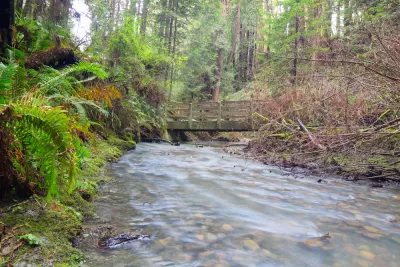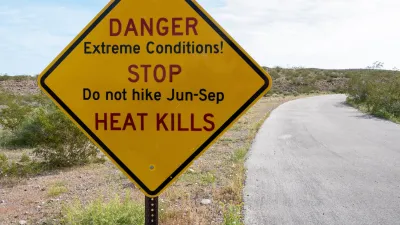Stream restoration projects along the Central Coast of California tend to reinforce class and racial distinctions, just like so many other matters of environmental justice.

Jennifer McNulty shares news of a study by researchers from the University of California, Santa Cruz finding that stream restoration projects tend to be completed in whiter, more affluent, more educated parts of the state.
"In addition, coastal stream restoration is heavily concentrated in Santa Cruz, Morro Bay, and southern Santa Barbara County, creating 'restoration deserts' with virtually no activity," according to McNulty.
Lead researcher Bronwen Stanford is quoted in the article asking why certain areas are overlooked for stream restoration projects. The study identifies three possible causes of the pattern of stream restoration projects: 1) a greater availability of grant funding in wealthier areas, 2) the political skills of wealthier and more educated residents, and 3) a greater preponderance of restoration organizations in wealthier areas.
"Stanford found that restoration is often dependent on the existence of a local organization, and they are more likely to be present in areas with wealthy, white, and educated populations," explains McNulty on that last point.

Planetizen Federal Action Tracker
A weekly monitor of how Trump’s orders and actions are impacting planners and planning in America.

Map: Where Senate Republicans Want to Sell Your Public Lands
For public land advocates, the Senate Republicans’ proposal to sell millions of acres of public land in the West is “the biggest fight of their careers.”

Restaurant Patios Were a Pandemic Win — Why Were They so Hard to Keep?
Social distancing requirements and changes in travel patterns prompted cities to pilot new uses for street and sidewalk space. Then it got complicated.

Albuquerque Route 66 Motels Become Affordable Housing
A $4 million city fund is incentivizing developers to breathe new life into derelict midcentury motels.

DC Area County Eliminates Bus Fares
Montgomery County joins a growing trend of making transit free.

Platform Pilsner: Vancouver Transit Agency Releases... a Beer?
TransLink will receive a portion of every sale of the four-pack.
Urban Design for Planners 1: Software Tools
This six-course series explores essential urban design concepts using open source software and equips planners with the tools they need to participate fully in the urban design process.
Planning for Universal Design
Learn the tools for implementing Universal Design in planning regulations.
Heyer Gruel & Associates PA
JM Goldson LLC
Custer County Colorado
City of Camden Redevelopment Agency
City of Astoria
Transportation Research & Education Center (TREC) at Portland State University
Camden Redevelopment Agency
City of Claremont
Municipality of Princeton (NJ)





























